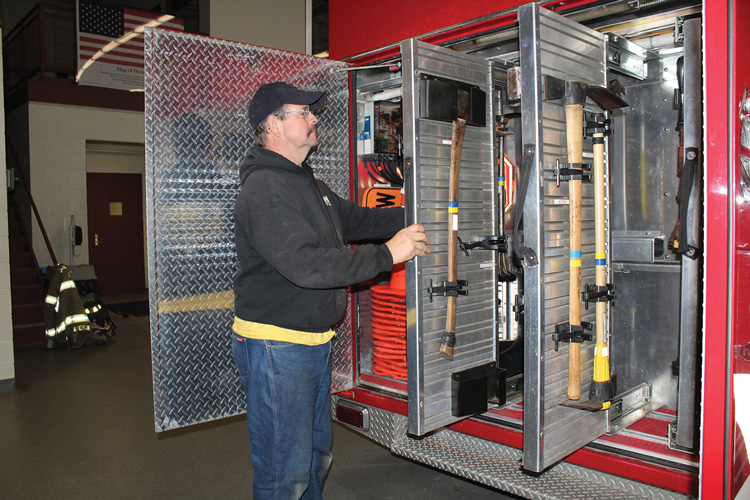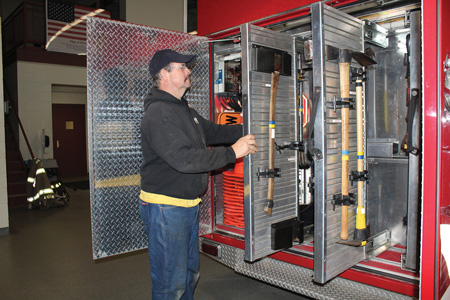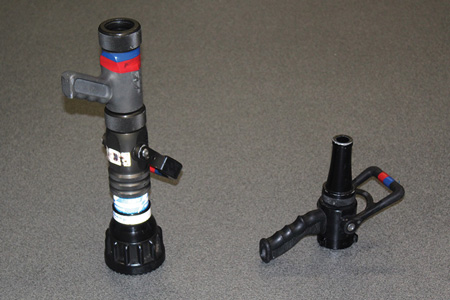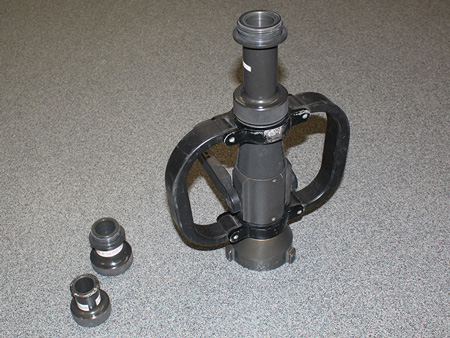
By THOMAS A. MERRILL
There are many subjects to master in the fire service. Thus, we are called to a wide variety of emergency incidents that require various skills to handle them safely and effectively. Some departments take things a step further and train or put teams together to handle low-frequency, high-risk incidents such as high angle rescue and building collapse. However, all fire departments are expected to put out a fire. Nearly every firehouse has some type of vehicle designed to deliver water to extinguish a fire. Not all departments have a ladder truck, an ambulance, and a rescue, but nearly all have an engine (or a pumper).
Engine Operations
Engine operations are the cornerstone of a successful outcome at any fire incident. As is often said, put the fire out and your problems will go away. A lot goes into this idea; the more educated and experienced your crew is, the quicker and more efficiently the operation should go. However, there are some basic rules of good, solid engine firefighter operations that all members, regardless of rank, tenure, or experience level, need to grasp. Every firefighter should be responsible for acquiring these skills. Stretching and getting a line in operation is one of an engine firefighter’s most important skills, but there are many equally important skill sets to understand and master before that is done, some of which follow.
Know your engines. No matter what your rank or tenure is, ensure you are familiar with the layout of and inventory on each engine in your department. Nothing looks more amateurish than a firefighter continuously walking around a pumper opening and closing compartment doors looking for a tool or needed equipment.
 |
| (1) Open your compartment doors and reacquaint yourself with what’s carried. Avoid the “dog chasing the tail” look on the fireground by taking just a few minutes of your time when at the firehouse to look over a compartment or two. (Photos by author.) |
I recently watched a video taken at the scene of a house fire. The engine was parked near a hydrant, and as some firefighters were working to deploy a handline, the engine chauffeur walked around the pumper trying to figure out which compartment contained the shortest length of hydrant hose to hook up to the hydrant. Precious time was lost until it was finally found. Avoid this “dog chasing the tail” look by reviewing and looking over the compartments on your apparatus to become more familiar with the rigs and equipment layout.
Review and understand your engine’s role. Review your department’s standard operating procedures/guidelines (SOPs/SOGs) for engine assignments and positioning. Talk to senior members and officers to ensure you have a good grasp on what’s expected of your rig and firefighters on that rig on arrival at an incident. Never waste valuable time by telling apparatus operators where to park or engine firefighters what line to pull at routine incidents and standard bread-and-butter fires. If the first-due engine is expected to secure a hydrant or the second-due engine lays out to the first-due engine and the ladder positions in front of the house, know this information before the incident. Plan ahead, and train and study to understand what is expected in your department’s operation.
 |
| (2) Whether it’s an automatic nozzle (left), a straight tip nozzle (right), or any other nozzle that your department uses for its primary attack line, teach your firefighters its unique characteristics and nuances, and train to ensure you are getting the gallons per minute (gpm) you want. |
For compelling reasons, you can change the SOP/SOG, and you must communicate that change. However, you can plan and rehearse many of the routine SOPs/SOGs well before the incident; this makes for a smoother and more fluid operation, and the firefighting effort will get off to a much better start. Whatever you desire, communicate, review, and practice the SOPs/SOGs so when that incident hits, everybody knows what to do.
Know your nozzles. Understand the nozzles carried in your firefighting arsenal. Most firefighters know what’s on the end of the standard preconnect, but what other nozzles are carried in the compartments, and when will they be called into play? Don’t just know what nozzles are carried – understand how they work.
If your nozzle of choice is an automatic, what is the minimum pressure required to get the necessary gallons per minute (gpm)? In the past, the majority of automatic nozzles required a minimum of 100 pounds per square inch (psi) to operate, but 75 psi and even 50 psi are becoming more common today. What are yours? What does “automatic” actually mean? Teach your firefighters how an automatic nozzle truly works and what it is designed for. The military doesn’t just throw weapons (like guns) at soldiers and tell them to use them. Likewise, fire officers cannot choose to ignore teaching their firefighters about the weapons (like nozzles) that they use.
 |
| (3) Get the seldom-used appliances out of the compartments and train with them. The time to refamiliarize yourself with them is not when you need them at a fire. Pictured here are two types of cellar nozzles (or Bresnan distributor nozzles, background and right) and a gated wye (left). |
If your nozzle of choice is a straight tip, have a basic understanding of the desired tip pressure that delivers the most effective stream. Unlike the automatic nozzles, understand that if additional lengths of hose are added, the stream may be impacted as well as its tendency to create more kinks because of the lower operating pressure they generally require.
Also, does your department have selectable gallonage nozzles in its arsenal? If so, what is the desired setting your department leaders want? Is there a process in place to ensure the pump operator knows when the selection is different so he can properly adjust the pump pressure? Unlike automatic nozzles, increasing or decreasing the pump pressure with a selectable gallonage nozzle can negatively impact a stream. Too much pressure can make the stream unmanageable, and too little pressure will produce a weak and ineffective stream.
No matter what nozzles you use, get out on the drill ground and flow water to not only learn (and reinforce) the unique nozzle characteristics but to see what the actual flow is. Too many times, firefighters rely on what’s printed in the manual and don’t go out and run some flow tests to see the actual gpm. What is your department’s targeted flow for various fires? Whatever your department leaders have decided, understand how to properly achieve it. Go to the training ground and put to the test what it says in the manual. Purchase or borrow a flow meter and pitot gauge to verify the gpm you are flowing and identify what operating pressures you want to pump to achieve your desired flows. Many times, firefighters are surprised to discover that they were not even close to flowing the gpm they initially believed they were flowing.
Understand seldom-used water delivery devices. The well-rounded firefighter works to understand when and how to properly use this equipment. I have seen firefighters open a compartment door, pick up one of these unique devices, look at it, put it back, and close the compartment door without asking what it was or how it was used. Chances are, if it is carried, it has been used before, and its usefulness is well documented. Teach your firefighters about such useful tools as the gated wye, the manifold, the Bresnan distributor nozzle, and the piercing nozzle. You may not have them all at your department, and you might have some I did not mention here, but if they are on your rigs, understand not only what they are called but when they might be called for and how to properly use them so an incident commander or engine officer doesn’t have to hold your hand during the incident.
 |
| (4) Nozzles using stacked tips can be great ways to deliver more gpm on the fireground, but it’s great only if your members know how to use them. The bigger the tip size, the more gpm (as long as there is enough water available and it’s pumped correctly). When taking off a tip, place it in your pocket. If you throw it on the ground, it can easily be lost. |
Know your operating pressures. As with nozzles, it’s imperative that firefighters know and understand the correct operating pressures for these various devices and the friction losses you can expect with them.
Some smooth bore nozzles have removable tips. Teach your firefighters about their tip sizes and, more importantly, what they are used for. Remind them that when the tips are removed, gpm, reach, and penetration can increase significantly (but only if the pump operator is made aware that the tip has been changed and adjusts the operating pressure accordingly). One extra “tip”: When removing a tip, place it in your turnout gear pocket. Don’t throw it on the ground in the heat of the moment. Finding a misplaced tip can be difficult, and many nozzle tips are lost on firegrounds.
Be familiar with hose packing configurations. There are many hose packing configurations from which to choose. Department leaders should pick the one they like best and stick with it. I prefer low hosebeds, and I’m continually amazed to see hosebeds spec’d where only “giants” can reach the top. However, no matter how high or low your hosebeds are, you must learn to work with what you have.
Pack your hosebed in a manner that contributes to a smooth operation. The well-trained and educated volunteer firefighter understands how his department wants it packed. Too often, hose layout and packing ideas change, leading to confusion and dysfunction. It is not acceptable for a crew to guess how to do it or to do it randomly. I am not against trying new ideas, but work to ensure that members clearly understand the unique nuances that go into their department’s hose packing.
 |
| (5) Pick a hose packing method and stick with it. Ensure all your members are trained and proficient in the method you choose. |
Many don’t think of hose packing as a drill topic, but it is. Remember the old saying, “The fire goes as the first line goes.” A well-thought-out hose packing configuration will help your firefighters get the hoseline off the rig and into operation quickly and efficiently. This smooth and quick deployment is the first step in achieving a successful outcome for a fire operation, which is the hallmark of a good fire department.
This is some basic information that we should understand and share with our fellow firefighters. Consider covering these topics when planning your next drill. It’s imperative that our firefighters have a firm grasp of their engines and the equipment the engines carry if we expect them to do their job effectively and efficiently.
THOMAS A. MERRILL is a 35-year fire service veteran and a member of the Snyder Fire Department (SFD) in Amherst, New York, where he has served 26 years as a department line officer including 15 years in the chief officer ranks and chief of department from 2007-2012. Merrill is also a fire commissioner for the SFD and a full-time fire dispatcher for the Amherst (NY) Fire Alarm Office.
Every Pump Operator’s Basic Equation
Engine Company Operations: Line Selection and Placement
The Engineer’s Overlooked Duties
Fire Engineering Archives

